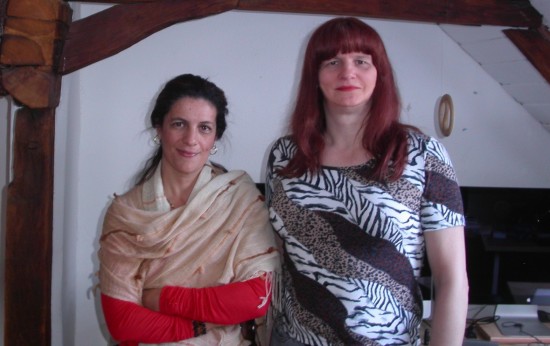There are two approaches to hypergrid content security currently being discussed by OpenSim developers and grid owners — the first, using the existing permissions system, is embraced by grids like Kitely looking to roll out something quickly.
But the other approach — to create a brand-new permission that allows content to be exported from a grid — just took a big step forward.
In late March, hypergrid inventor Crista Lopes met for a three-day working session with OpenSim core developer Melanie Thielker to hash out the basics of the new system, Hypergrid 2.0.

Lopes is also a professor of informatics at the University of California, Irvine and the creator of the Diva Distro distribution of OpenSim, and Thielker is CEO of London-based Avination Virtual Ltd. and founder of the Avination grid.
According to Thielker, Hypergrid 2.0 builds on the “suitcase” feature added in Hypergrid 1.5. The “suitcase” is an inventory folder that isolates certain assets so that the rest can’t be accessed by rogue grids. With Hypergrid 2.0, only items with the new permission set will be able to be added to the “suitcase” and taken to other grids.
In addition, Hypergrid 2.0 will put additional controls in the hands of grid owners, such as the ability to prevent users from rezzing items from the “suitcase” that they have brought home from other grids. Grid owners can also keep appearance assets from traveling to other grids.
“Hypergrid 2.0 will be a comprehensively secured and highly configurable system, that will let creators sleep soundly, knowing their creations are safe,” Thielker said in a statement.
Hypergrid 2.0 will work with existing Second Life and OpenSim-compatible viewers.
Reusing existing permission settings, the way Kitely has already done with OAR exports and plans to do soon with hypergrid travel, would be significantly easier because it requires no changes to the way permissions work. Kitely checks to see that each object has copy and transfer permissions before saving it to an OAR file. The company has also donated the code to OpenSim, so that any grid can add its own combination of permission checks before exporting regions.
But this approach has its disadvantages, as well.
“I don’t think it’s a good idea to reuse the copy and transfer permission concepts that were thought out for exchanges of assets within grids,” Lopes told Hypergrid Business. “Some people may tag objects as copyable and transferable assuming that they will still be inside the grid, not outside.”
That’s why a new permission is needed, she said.
“For that, we need to extend the asset server with that kind of information, as well as give the users an interface to be able to express it on a per-object basis,” she added.
According to Lopes the new technology won’t be ready this quarter, but may be done sometime this summer.
This isn’t the first time other developers have contributed to the hypergrid effort, she added, including  Jonathan Freeman, Intel’s Mic Bowman, “BlueWall” and “Snoopy.”
However, Thielker has been her main collaborator on the hypergrid effort, she said. “Melanie has been involved in the design since very early on, even when she had no plans to ever use it. I credit Melanie for significant contributions to the architecture.”
The collaboration has been purely technical, Lopes added — there is no business relationship, nor non-agreements between them. But Lopes added that she knows that there are business reasons for Avination to be looking at the hypergrid.
“Â From where I stand, it’s great to see commercial grids starting to show an interest in decentralization, and getting serious on helping shape the policies for user and asset exchanges,” she said.
- OSgrid back online after extended maintenance - April 16, 2025
- Analysts predict drop in headset sales this year - March 25, 2025
- OSgrid enters immediate long-term maintenance - March 5, 2025
